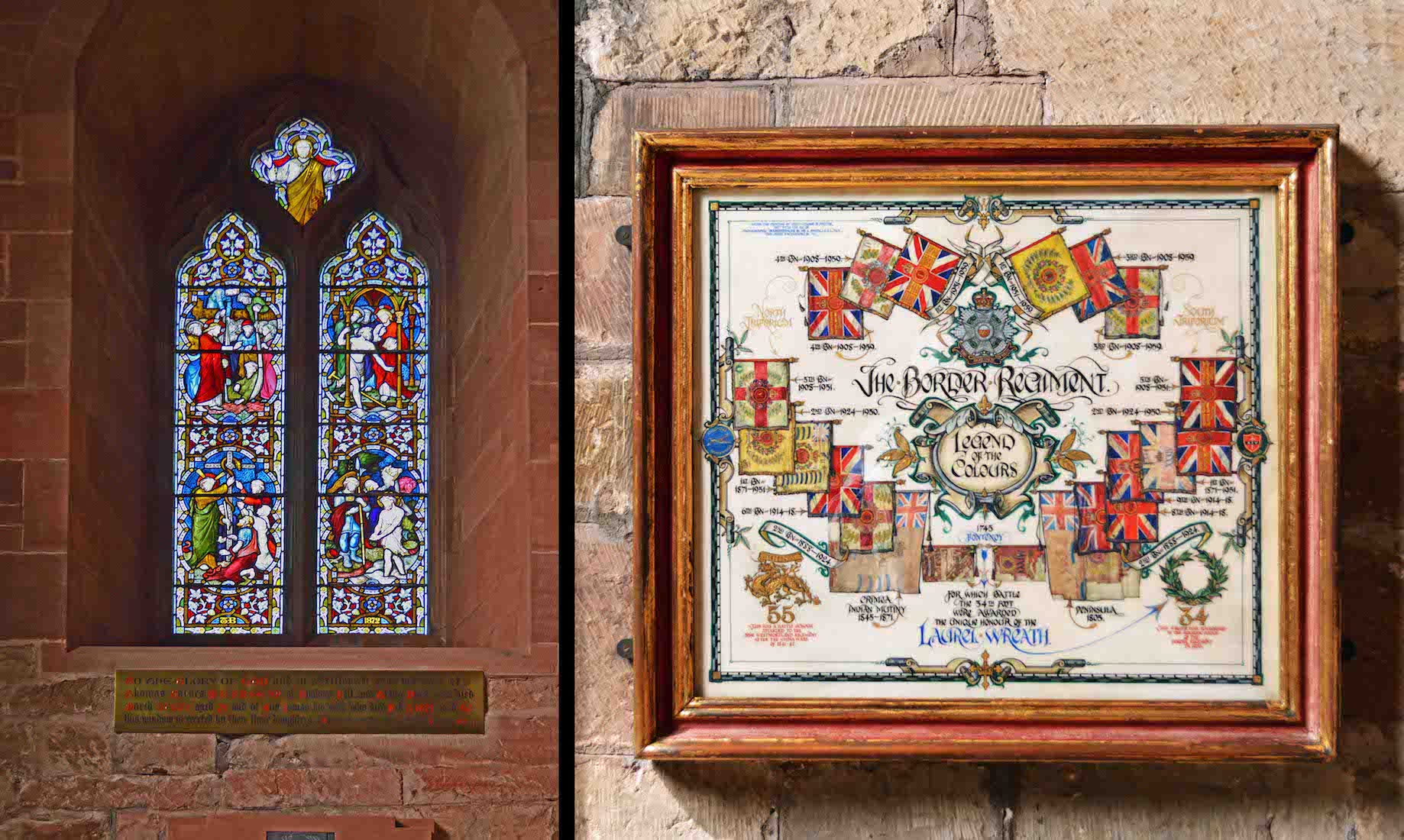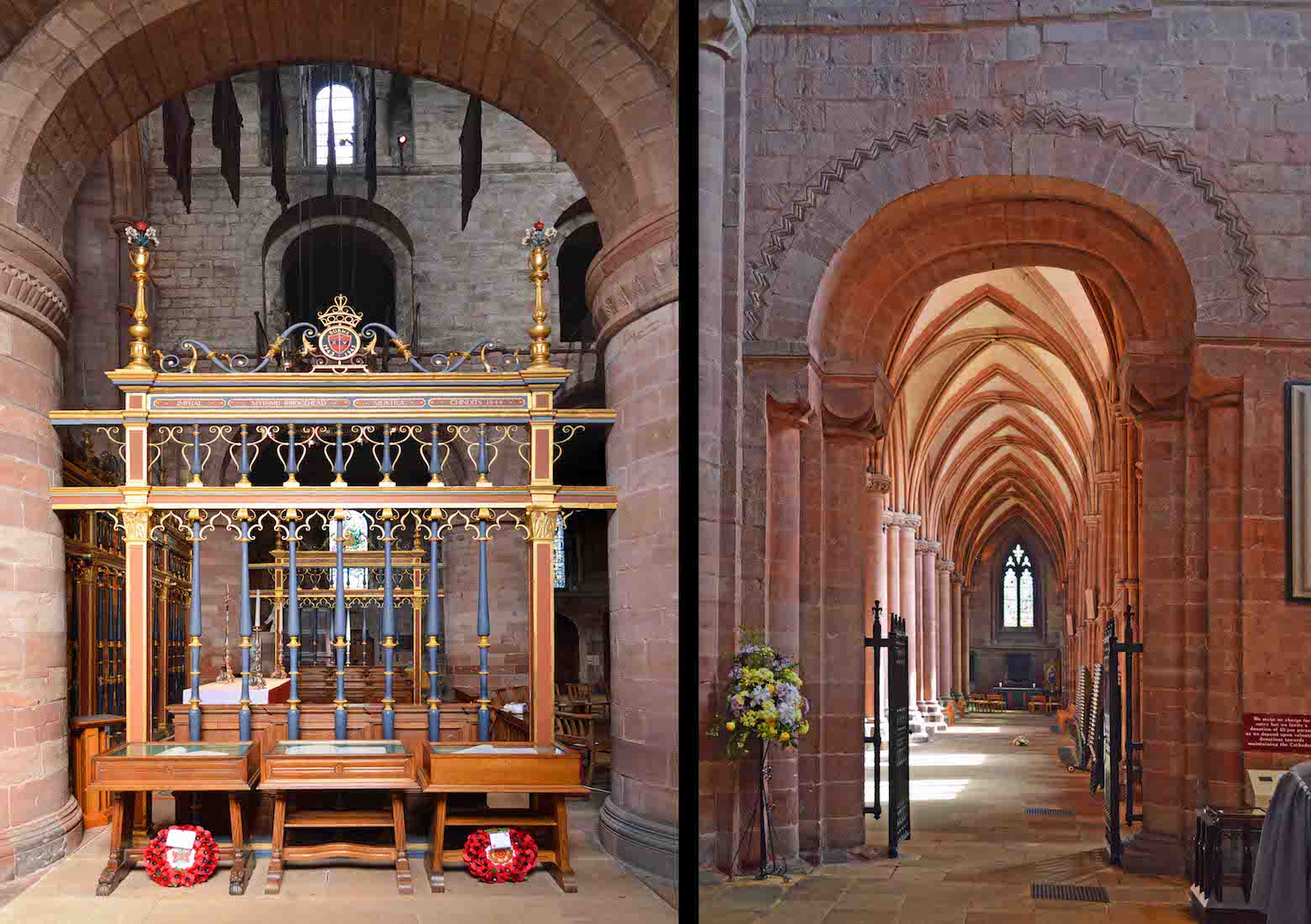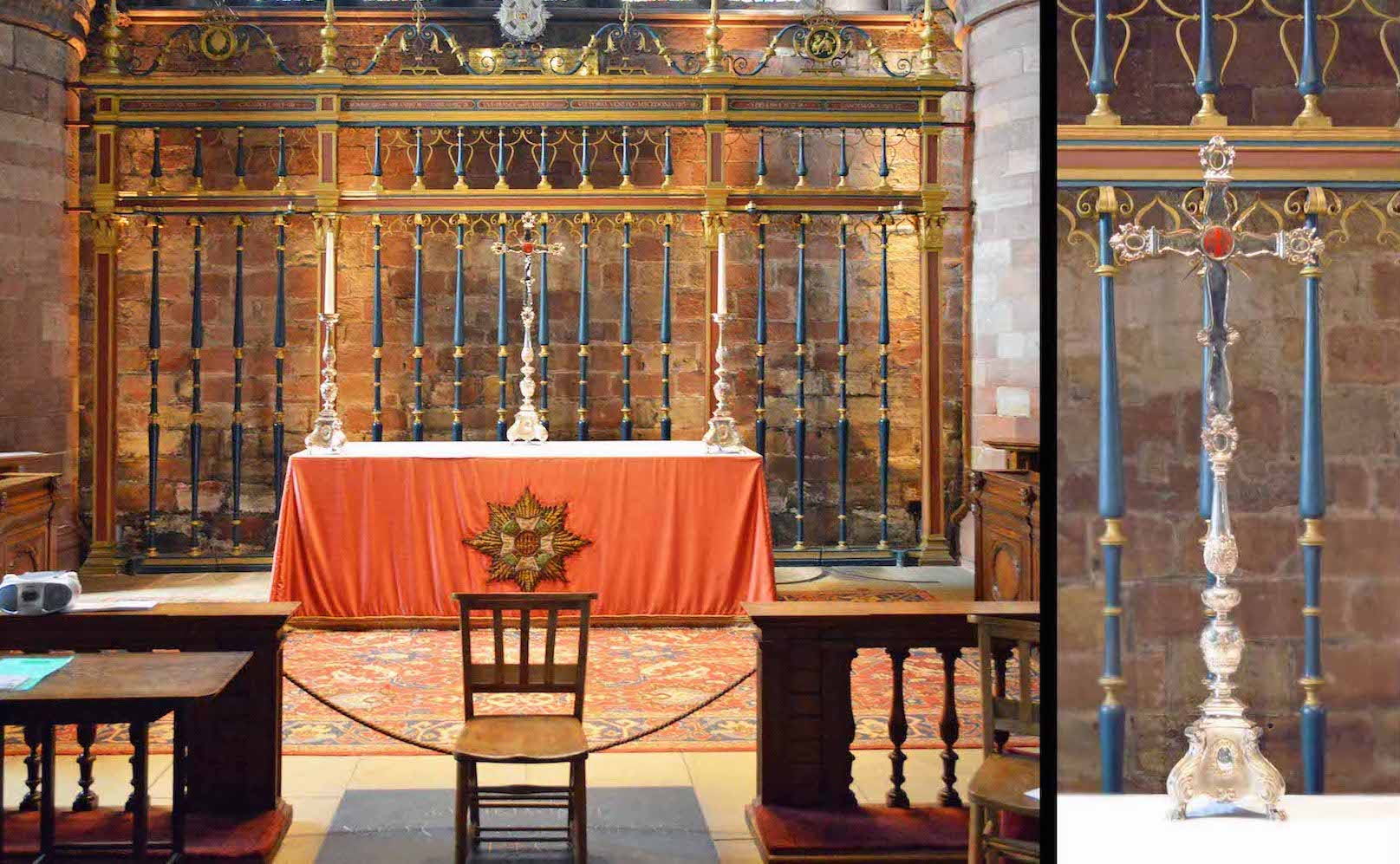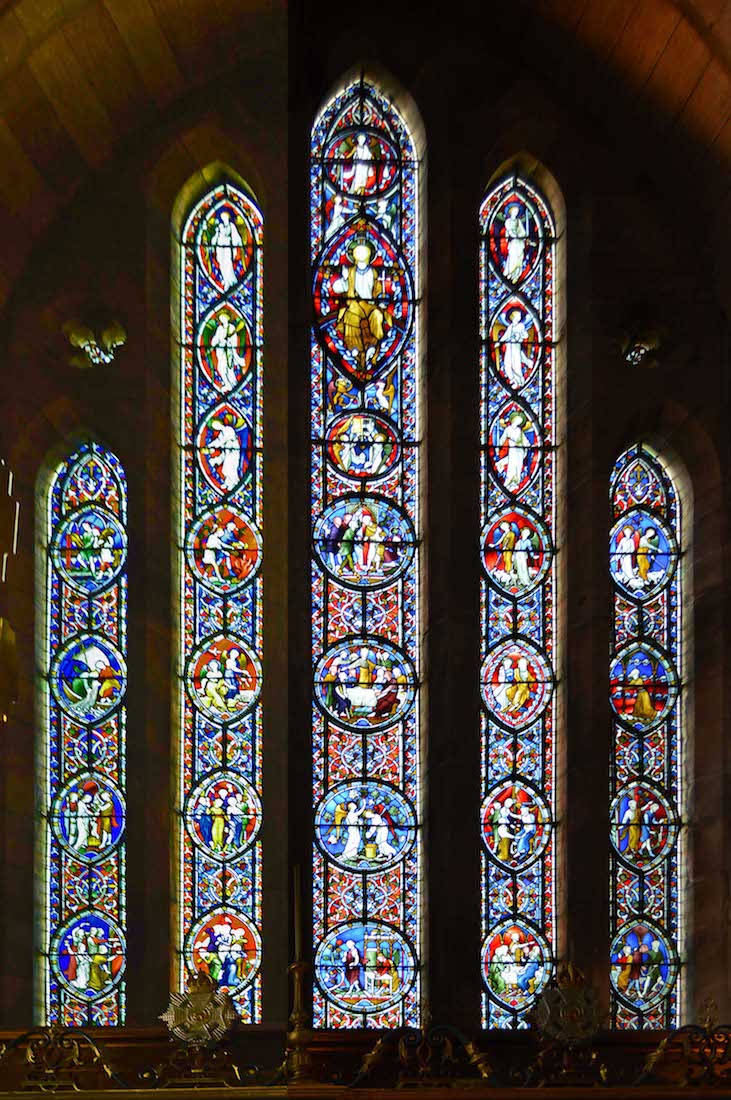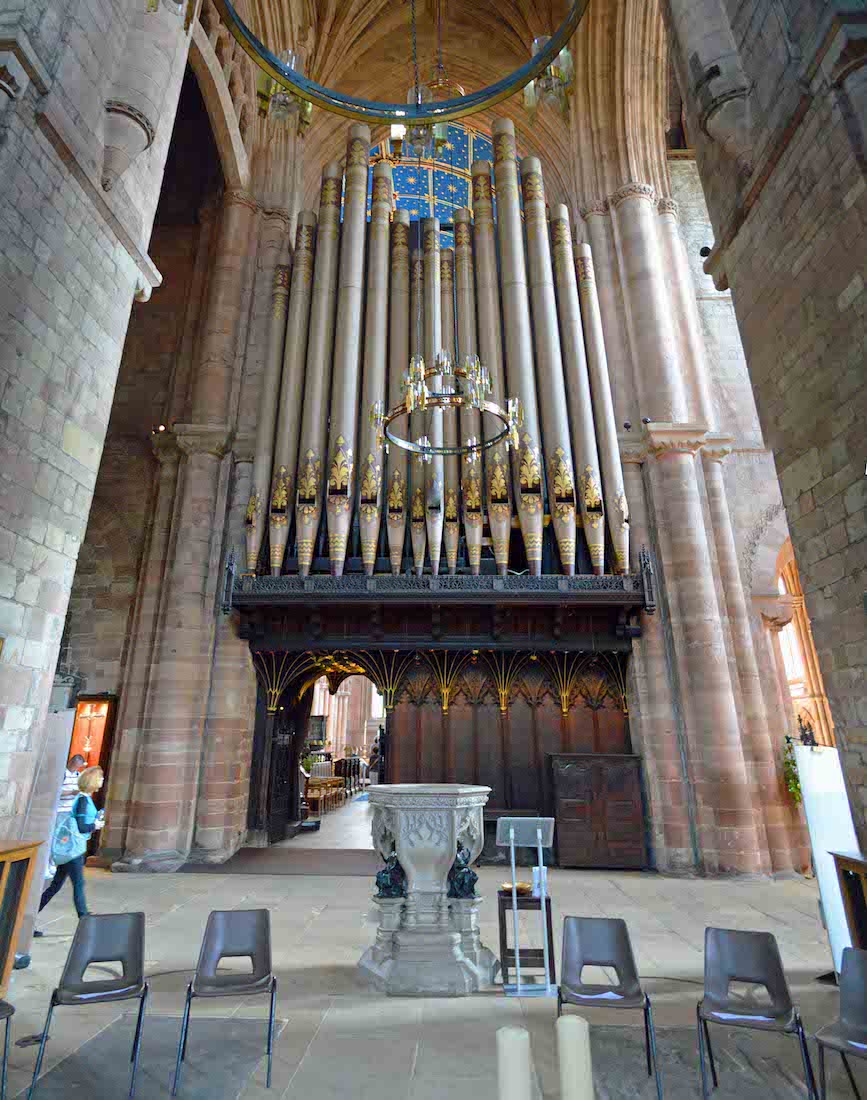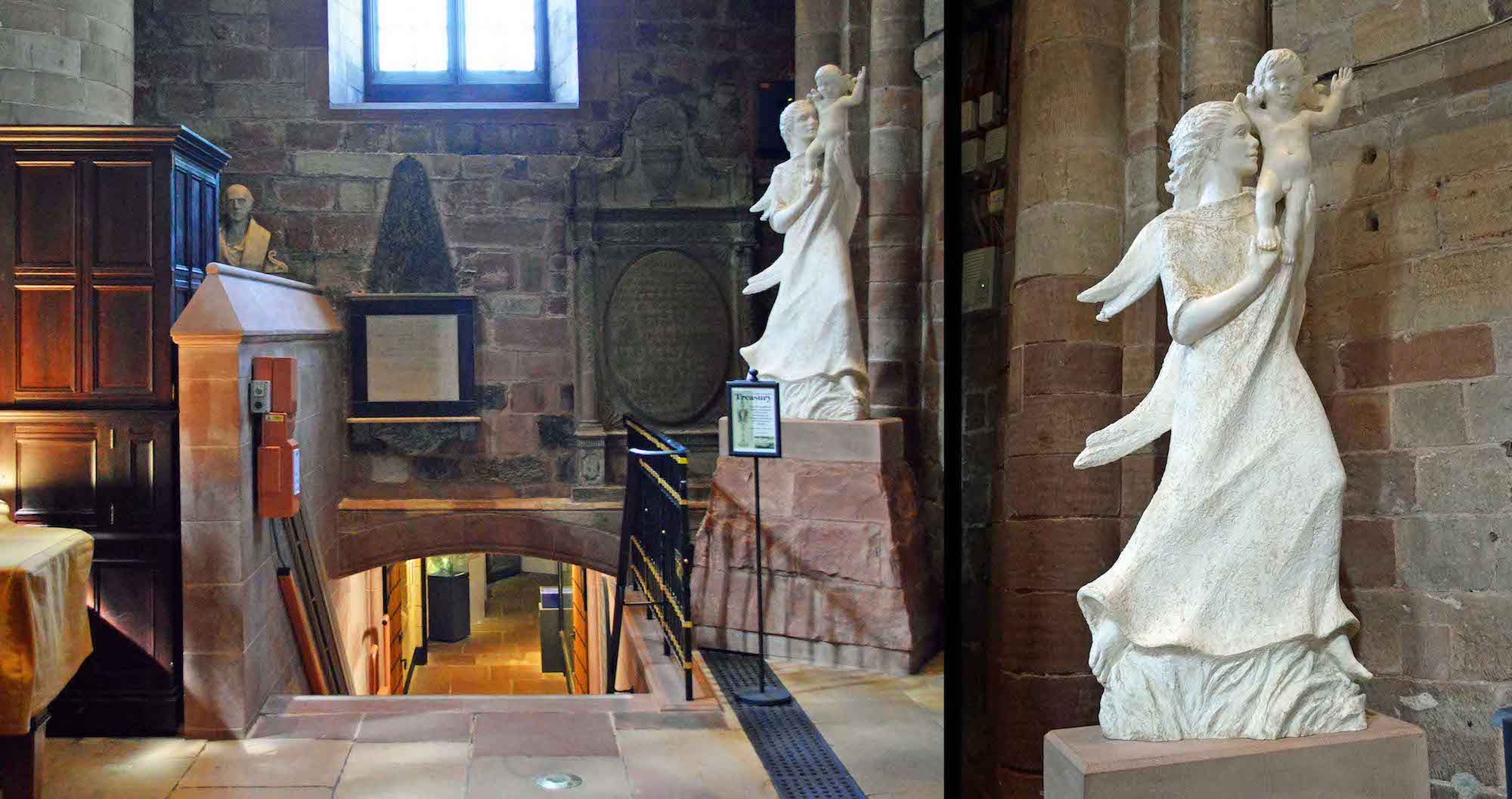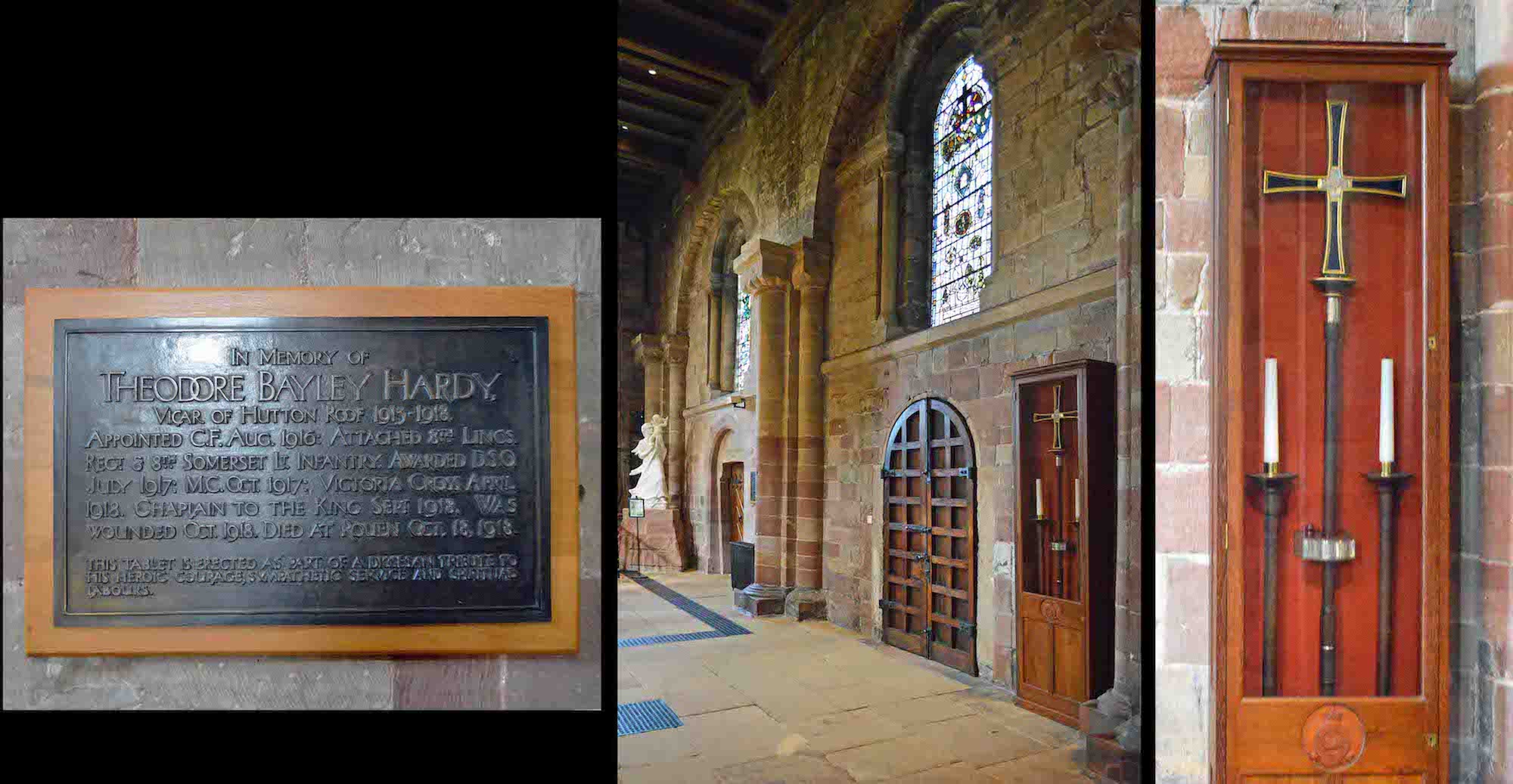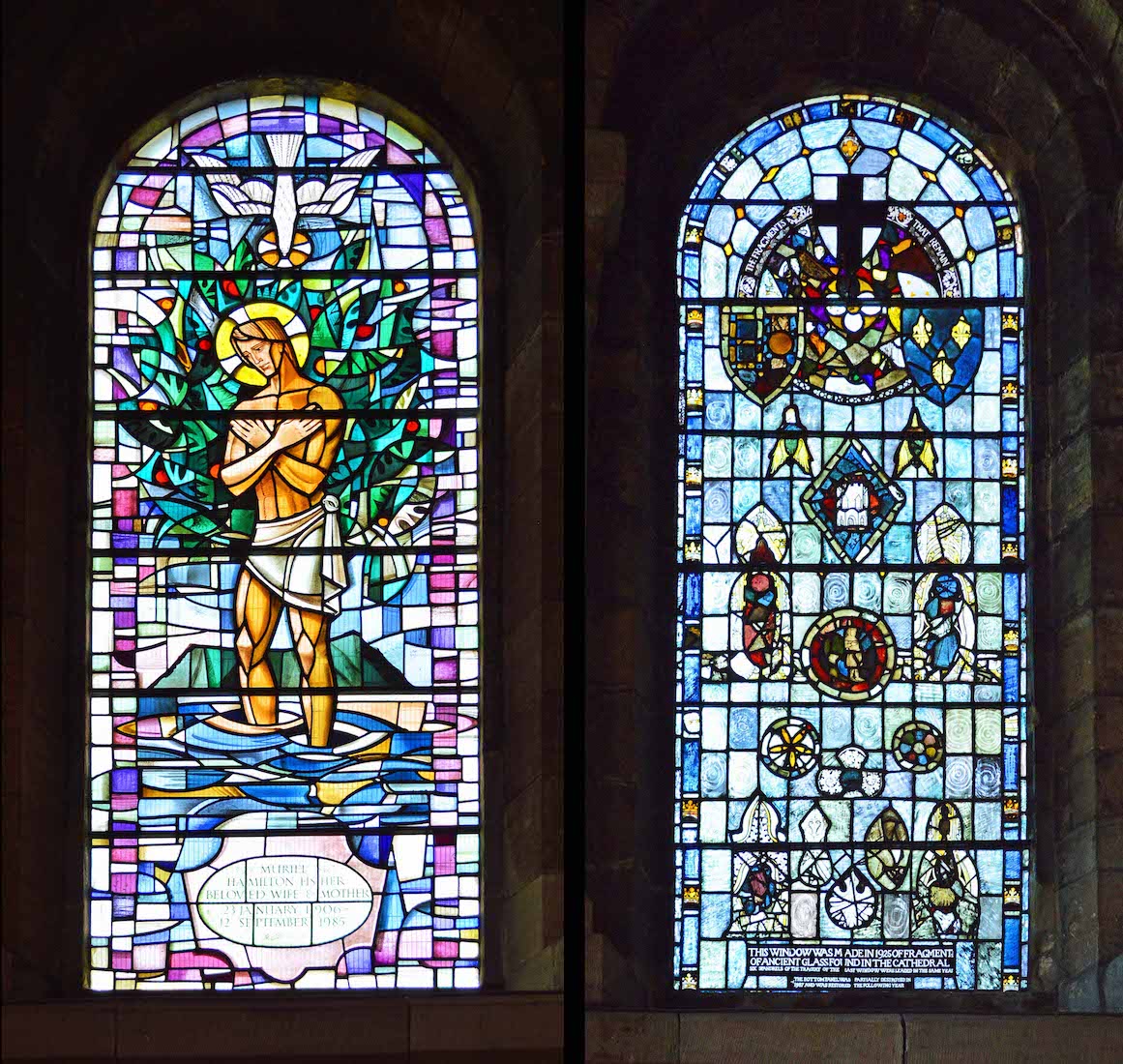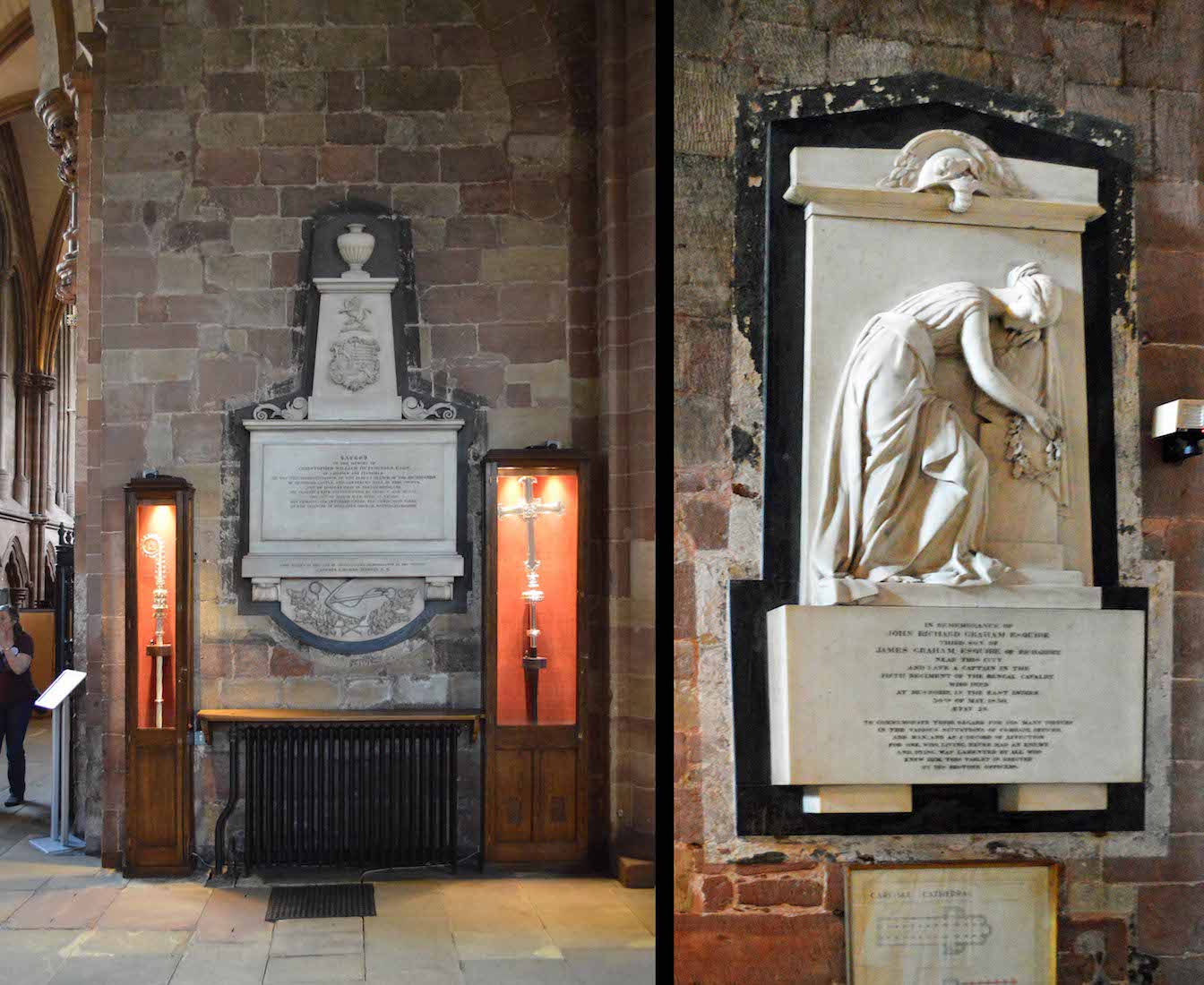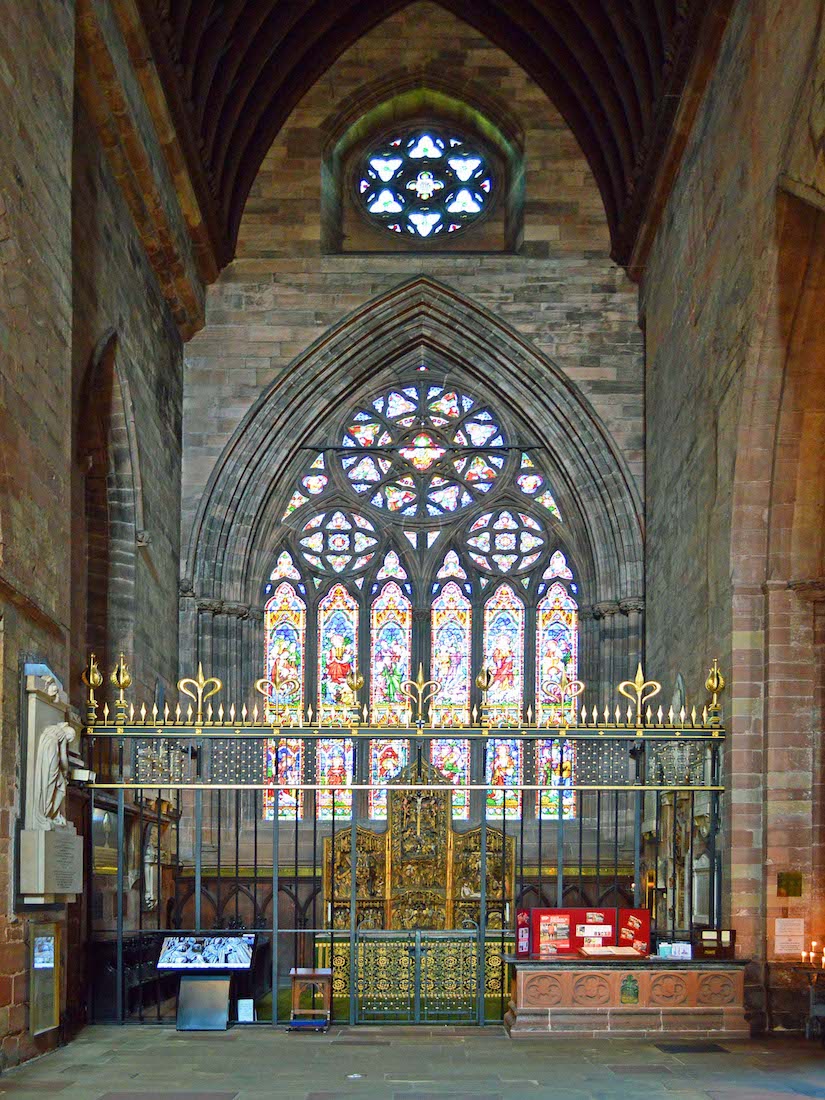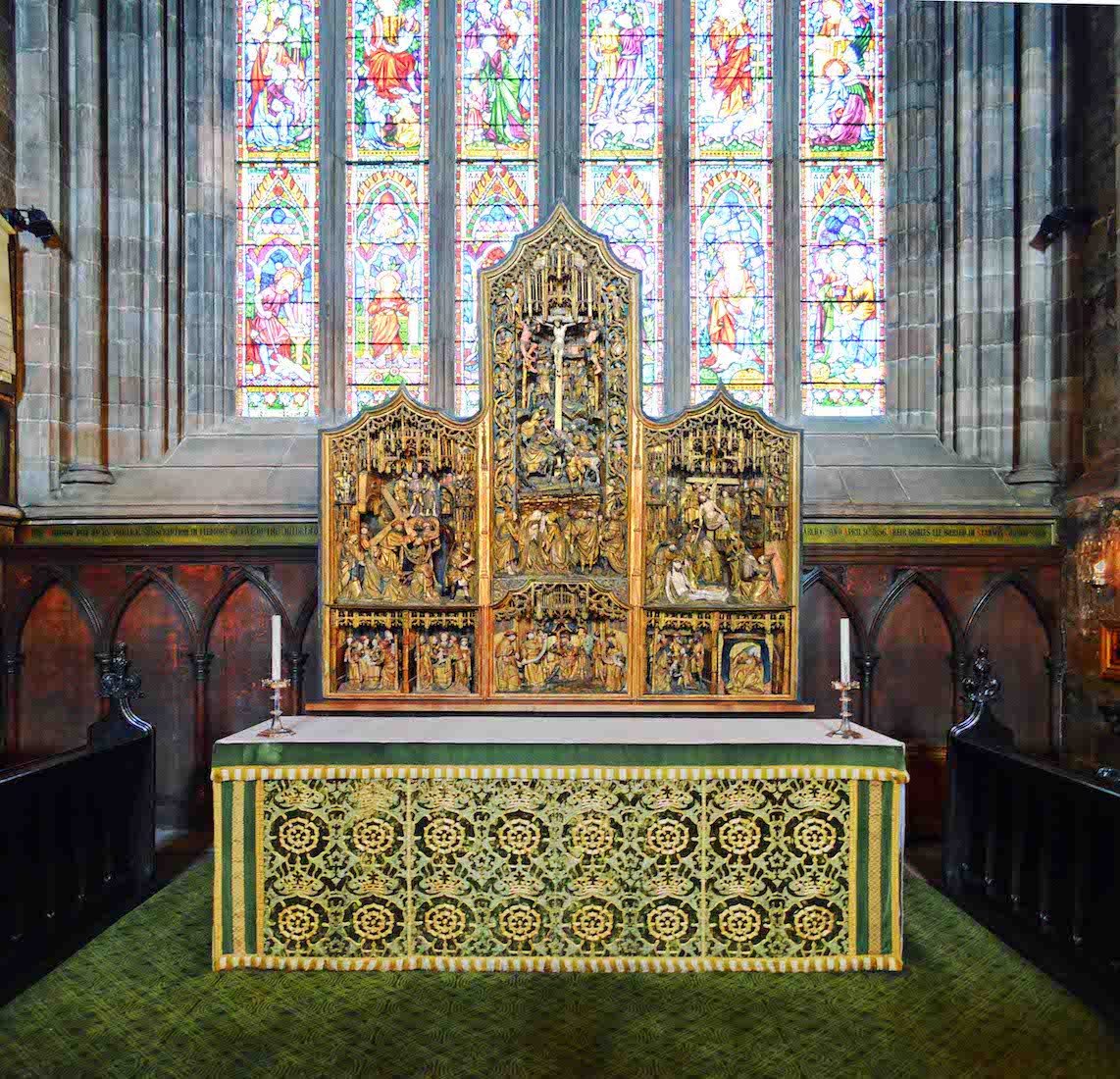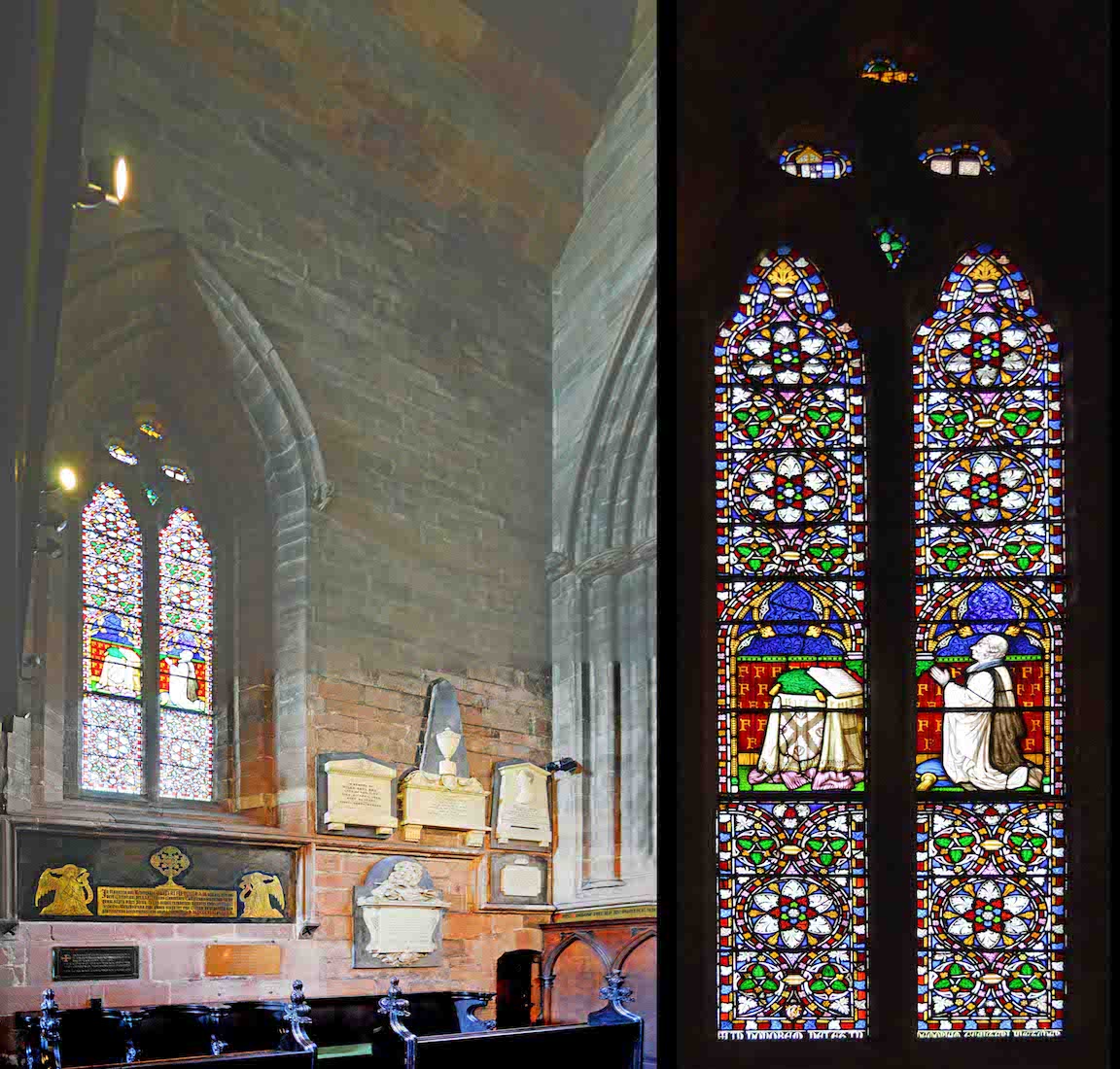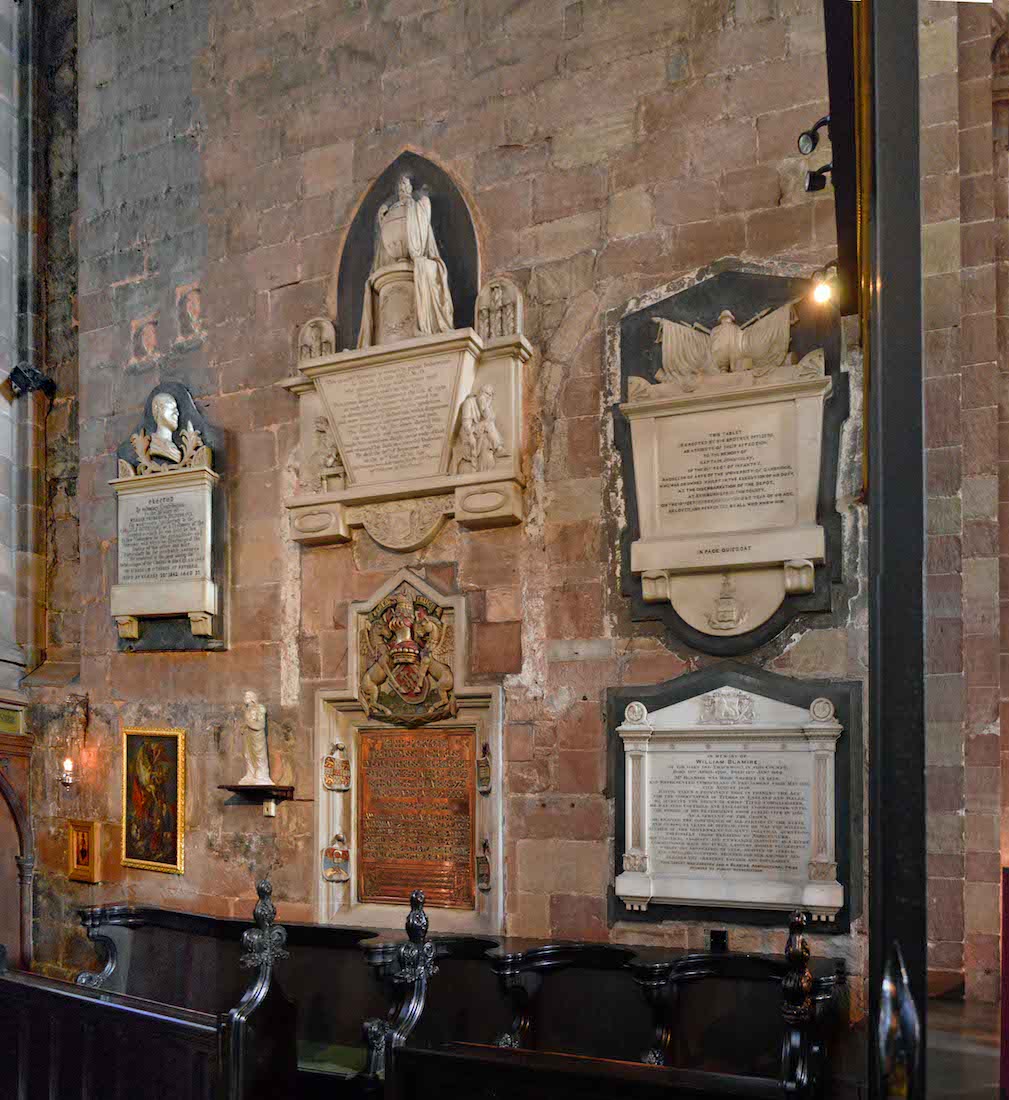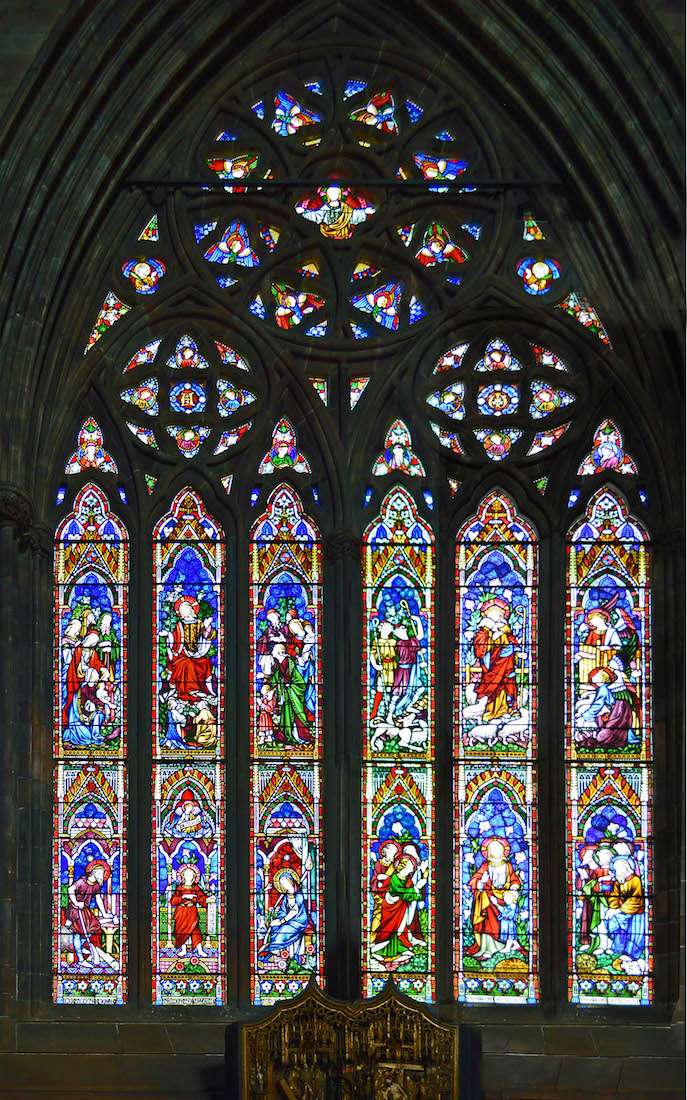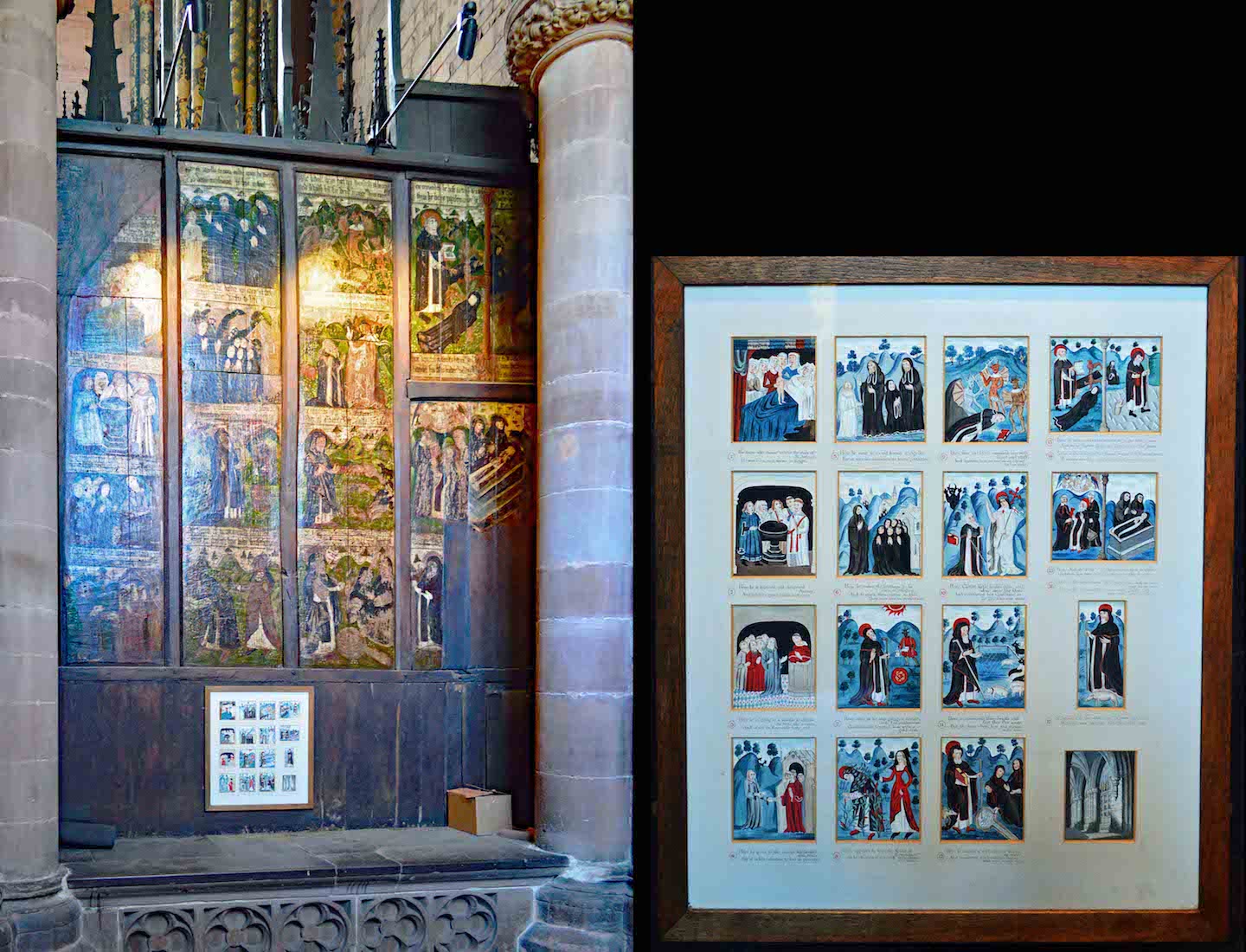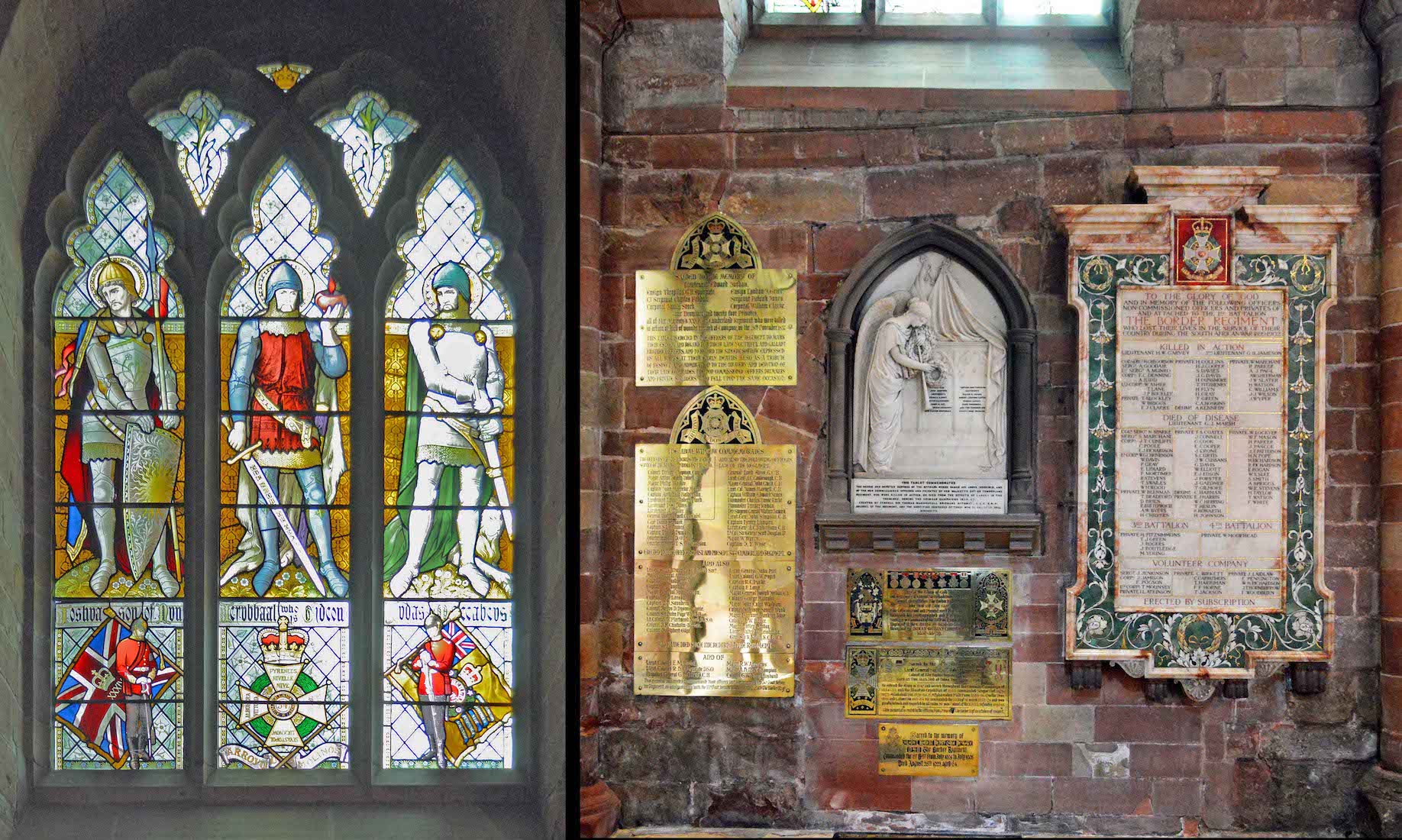
Leaving the transept we explore the South aisle of the nave. So short! On the wall are various tablets and memorials remembering those killed in battle. And the window depicts three warriors of old: Joshua, son of Nun; Jerobbaal who is Gideon; and Judas Maccabeus. It honours the fallen of the 34th Cumberland Regiment. PLAN
22. SOUTH NAVE AISLE
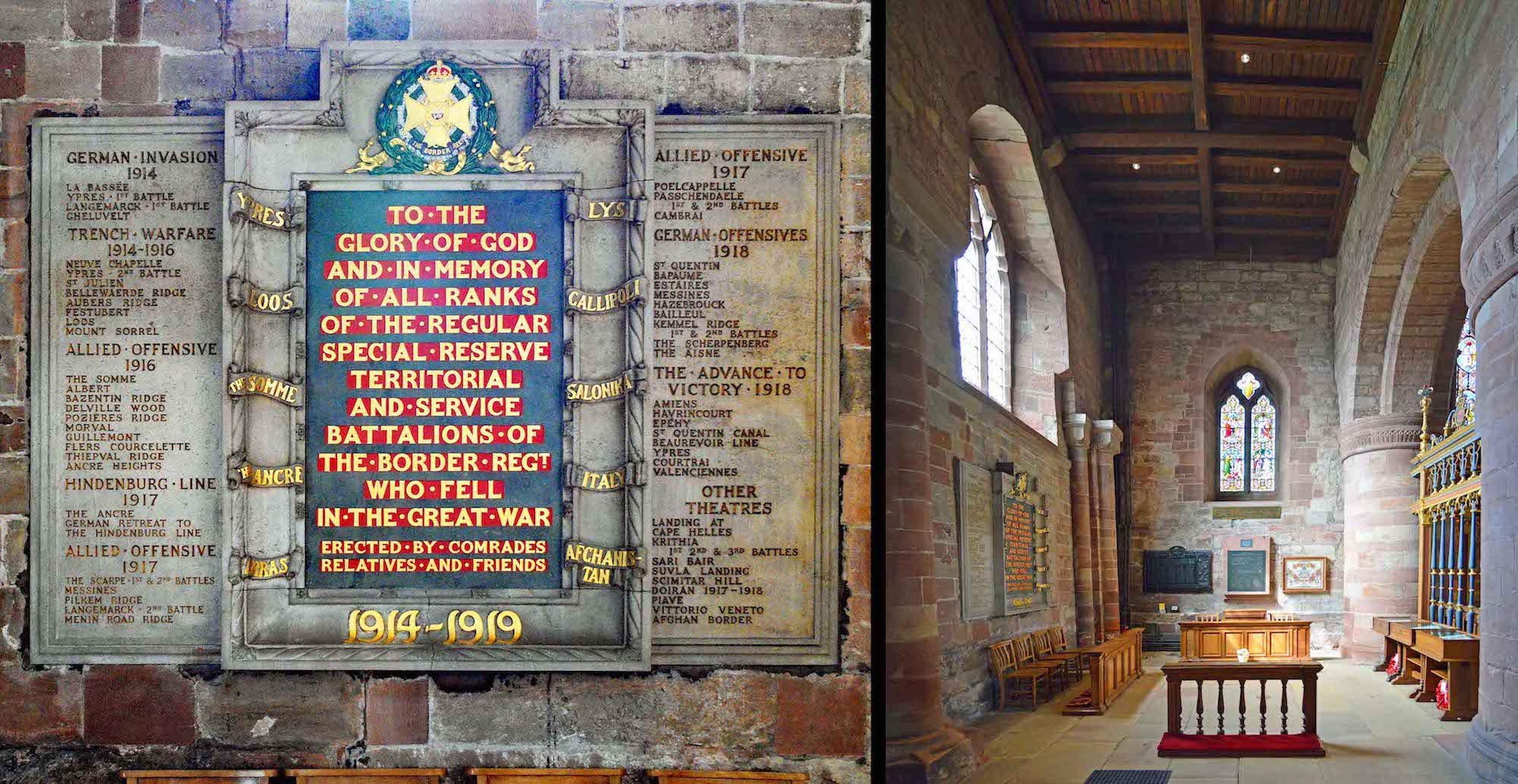
Further along on this wall is a memorial to the ranks of the Regular Special Reserve Territorial and Service Battalions of the Border Regiment who died in the 1914 –18 War. Ahead is an altar with a stained glass window and three further memorials behind. At right are three Books of Remembrance.
23. WINDOW AND DISPLAY
This is the window at the West end of the South nave aisle. The left light shows Jesus healing the paralytic lowered down through the roof, and below, Moses erecting the pole with the bronze snake for healing. The right light shows the healing of the man by the pool at Bethsaida, and below, Namaan being healed in the river Jordan. The colourful panel is entitled ‘The Legend of the Colours’ of the Border Regiment. It shows various colours with Battalion names and dates.
24. TWO VIEWS FROM THE WEST OF THE NORTH AISLE
The first view looks through the side screen and across the nave: the main Regimental Chapel lies just on the other side. The second view shows the full length of the South aisle looking to the East. Notice again the distortion of the Norman arch due to subsidence.
25. FONT
The unusual grey stone font was a Victorian offering designed by Sir Arthur Blomfield (1829 – 1899), and was presented to the Cathedral in 1891. It is made of stone, hexagonal, elaborately carved and with three bronze figures, one on every other side, sculpted by F. W. Pomeroy (1856-1924). The figures are Mary and the child Jesus, John the Baptist, and St Philip.
26. REGIMENTAL CHAPEL
Although the Regimental Chapel in the nave of the Cathedral was only formally established in 1949, that area of the West end of the Cathedral has long had an increasing assembly of war memorial and personal military memorials, dating back to 1856; and regimental colours dating back to 1745. They reflect the transition of the local regiment from the 34th Regiment of Foot to the Border Regiment, the King’s Own Regiment, and the present Duke of Lancaster’s Regiment. Memorial books of the First and Second World Wars onwards are displayed.
27. WEST WINDOW
About 1870 the West end of the nave was restored by Mr. Christian. The West window is filled with glass, in memory of the Rev. C. Vernon Harcourt, canon and prebendary of Carlisle (d. 1870). The window contains a large number of ‘miniatures’: various angels, the disciples pulling in fish, various scenes from the life of Christ ... .
28. NAVE ICON
On the wall of the central nave is a large icon entitled ‘The Theophany of the Lord’. It shows Christ being baptized by John the Baptist in the presence of angels. It is by Aidan Hart and was written in 2007.
29. ORGAN PIPES
Looking East from the Regimental Chapel we see a wall of organ pipes. The Cathedral owns a fine Willis organ installed in 1856. Only Henry Willis’s second cathedral project, this was the first instrument in an English cathedral to be screened by a simple pipe display without formal casework, though extra pipes were added in 1875, and, inevitably, more work has been done on it since. The organ has four manuals, pedal board and almost 4000 pipes. The doorway at the left below the pipes looks enticing!
30. ENTRANCE TO THE TREASURY
Moving across to the North side of the Nave, to the West we see steps down to the Treasury. We shall visit the Treasury later. At right is a plaster cast by Josephina de Vasconcellos entitled ‘Virgin and Child’, acquired in 1990.
31. NORTH NAVE WALL
The centre view shows the whole of the North nave wall from the ‘Virgin and Child’ statue to the corner of the North transept. We observe the two stained glass windows, a memorial plaque in the distance, doors leading to the sacristy, and a processional cross and candles set. The memorial plaque remembers Theodore Bayley Hardy who was Chaplain to the King and awarded a VC in 1918.
32. NORTH NAVE WINDOWS
At left is a modern window showing the baptism of Christ, and in memory of Muriel Hamilton Fisher. The dove descends from above, and the apple tree behind alludes to man’s fall as told in Genesis. The window at right is a collage of pieces of glass. At bottom it reads: This window was made in 1925 of fragments of ancient glass found in the Cathedral. Six spandels of the tracery of the East window were leaded in the same year. The bottom panel was partially destroyed in 1987 and was restored the following year.
33. ROUND TO THE NORTH TRANSEPT
At left are three items: a bishop‘s staff, a memorial, and a processional cross. The memorial is for Christopher William Hutchinson, who appears to have been a worthy citizen, but without claim to staff or cross. The memorial at right is for John Richard Graham who died in action in 1830 while serving with the Bengal Cavalry.
34. NORTH TRANSEPT
The end of the North transept lies behind a screen. We see the Graham monument at left, an ornate altar piece at centre with a large stained glass window behind. In fact, there is another stained glass window at left, and the walls of the transept beyond the screen are lined with plaques.
35. BROUGHAM TRIPTYCH
The Brougham Triptych was made in Antwerp in about 1520, and bears the trademark of the Antwerp Guild of Woodcarvers. It may have been in a church in Cologne before it was bought in the 1840s by Baron Brougham and Vaux to decorate St Wilfred’s Chapel, Brougham, from which it derives its name. Technically it is not a triptych because it lacks the two doors making the wings, one either side. It is however a fine example of a style of altar piece made in Northern Europe from 1380 to 1550. It portrays Christ’s passion, and also includes infancy and resurrection themes.
36. TRANSEPT WEST WALL
Peering through the grill, we see to our left a number of memorial tablets on the wall and a rather ostentatious brass remembering Gualteri Fletcher. The window above has the simple image of an unidentified robed cleric at prayer. The shield on the side of the Bible support may give some clue?
37. TRANSEPT EAST WALL
On the East wall of the transept are various memorial plaques. The gold memorial at centre is for Richard Assheton Cross, 2nd Viscount Cross (28 January 1882 – 14 March 1932). He was a British peer and civil servant.
38. TAIT MEMORIAL WINDOW
The Tait Memorial Window in the North transept commemorates the five daughters of Dean Archibald Campbell Tait and his wife Catherine. Aged between 10 years and 18 months, they died in a 33 day period from 6 March to 8 April 1856. Even in those days of high infant mortality their deaths caused a sensation. The children were all buried in Stanwix graveyard, where there is a memorial to them. Two other children escaped infection. Dean Tait was soon afterwards appointed Bishop of London.
39. NORTH AISLE LOOKING EAST
We leave the North transept to walk up along the North aisle. The North wall, with its two-light lancet windows, is Early English, and dates from the period immediately after the demolition of the Norman choir about 1260. There is an altar and stained glass window in the distance, but our immediate attention is drawn to the painted panels at right.
40. PAINTED PANEL I
On the back of the choir stalls there are four sets of painted panels. The panels were painted in about 1485 – 90, and one of them bears the monogram of Prior Gondibour. This panel illustrates the life of St Anthony of Egypt, the founder of monasticism. The texts of the lives of these saints are written in Anglo-Saxon, and are given as rhyming couplets. The paintings, though rudely executed, give good examples of late fifteenth-century dress and ornament.


